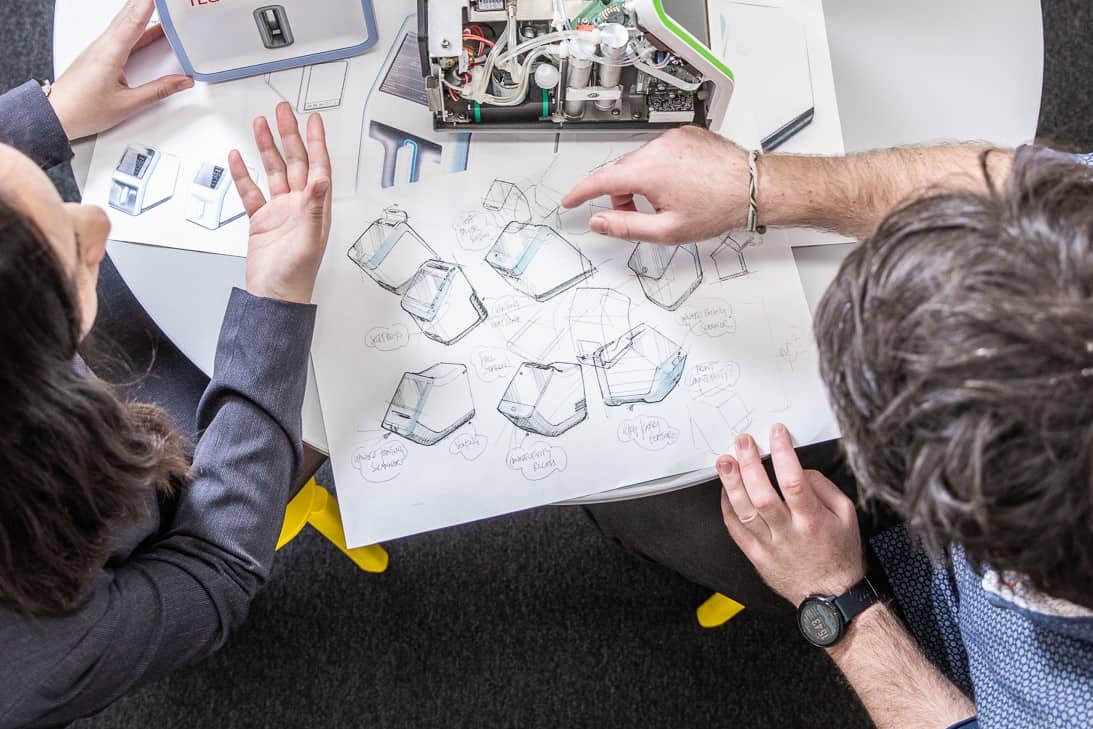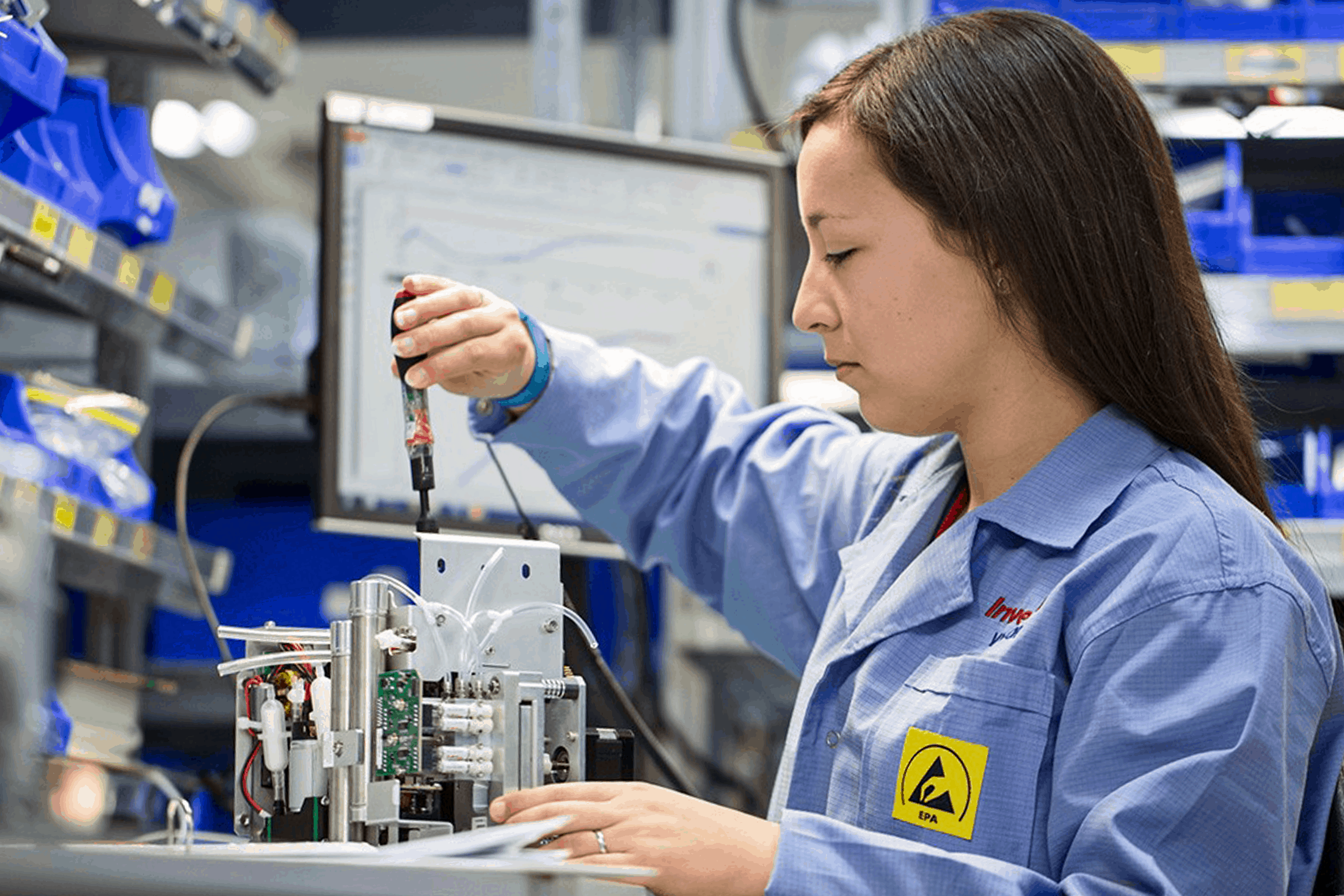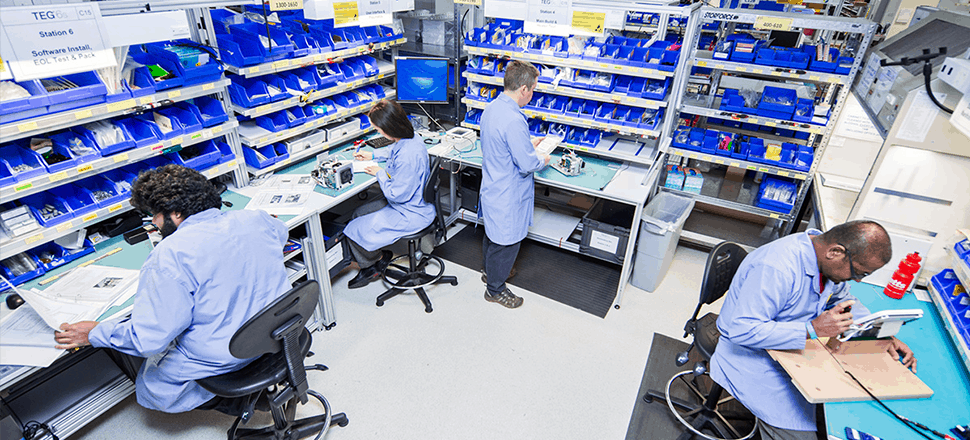Having a manufacturing engineer embedded within the design team during development ensures there is a specialist considering critical items such as design for assembly and manufacturability throughout the process.
Designing for assembly
Assembly, particularly labor, is a significant component in any product’s cost; so, it is important to understand the assembly process long before it begins. One of the primary goals is to eliminate complexity and keep the number of parts as low as possible. Fewer parts can mean reduced manufacturing time and labor costs.
How parts are manipulated during manufacturing is also important. Reducing the number of times a part is handled, ensuring a logical assembly sequence, and designing parts that can only be put together in one specific way will reduce the length of production time and eliminate potential mistakes. You also get the added benefit of a more reliable and robust design.
Designing for manufacturability
When designing for manufacture (DFM), a manufacturing engineer can help ensure all of the components in the design are compatible with the most appropriate and cost-effective manufacturing processes.
Some of the ways design and manufacturing team collaboration can build simplicity into the product design include:
- Minimizing the number of parts, especially moving parts
- Combining functions/parts (e.g. using one part for several functions)
- Eliminating unnecessary features
- Defining and adding assembly features into parts.
Need a product development partner?
How you translate breakthrough science into a successful POC product is key to realizing its full promise and potential. We can help.
GET IN TOUCH
By far the biggest impact on the cost of a device is the bill of materials (BOM). Therefore, when it comes to sourcing parts, supplier selection is critical when making the trade-off between low cost and required quality.
Choosing suppliers with care
Manufacturers and other suppliers must be vetted closely to determine if they’re a good fit.
- It’s important to understand each vendor’s capabilities to ensure they can make components correctly and in the appropriate volumes. How are price breaks structured? How many parts must be manufactured before costs come down? What is the company culture like? What is their quality reputation? Is quality a cornerstone? Do they take a proactive approach to ensure high-quality parts?
- Having established supplier relationships significantly enhances agility and speed during development and manufacturing establishment. Where new suppliers are required, agreeing to key items early (costs, lead times, etc.) is critical, while also allowing for an element of flexibility for an evolving design.
- When possible, it is important to develop parts that are easy to manufacture and don’t require special processes. Production simplicity can widen the field of possible vendors, making it easier to find the right ones.
- Raw material costs also play a significant role in a device’s ultimate price. A vendor may come in at the lowest price, but shipping costs, tariffs, and other factors may eliminate that advantage.
Building relationships is the key to sourcing suppliers and materials. References and site visits are a great place to start.
Identifying critical components early so they can be managed
All products have critical components. These are items that are not only critical to the function of the diagnostic device but may be difficult to source or have quality requirements that make them complex to make. These items need to be identified early so they can be managed.
These critical components are generally expensive due to the nature of what function they provide. Identifying and establishing suppliers for these components is extremely important to keep the cost down and establish quality requirements and lead times up front. A supply issue with a critical component during production will add substantial cost if alternative rapid solutions are required.
Procuring parts for prototype builds through the manufacturing supply chain
To reduce risk of any supply chain issues at the start of production, it’s beneficial to have the manufacturing facility procure as many parts as possible for the final prototype builds. This is possible through effective design transfer planning.
In a manufacturing environment, incoming goods inspection is critical to prevent poor quality material getting to the assembly line. Using the manufacturer to procure the parts not only allows the supply chain to be established, but also the incoming inspection process to be developed. Doing this for prototype procurement allows the opportunity to address issues before reaching production.
Increasing quality and efficiency of the build process
As the manufacturing process matures, it will evolve into a formal build procedure. All too often, companies will wait until the end of the design stage to develop this procedure, missing the opportunity for considered iterations. This results in an inefficient process with an increased likelihood of quality issues that will add to the cost for the life of the product. In the case of a medical device that has been released and validated, a change to the build process can trigger re-validation – a cost that may not justify the future savings.
A better approach is to have the build procedure ready to use for the several prototype builds of the design. This will allow the design and manufacturing teams to use the build process during the development stage and work together to refine it over several iterations. By finding ways to increase quality and efficiency during these very important prototype builds, companies can achieve significant ongoing cost savings.
Improving quality and repeatability using PFMEA
Once a high-level build process is developed, we use PFMEA (Process Failure Mode Effect Analysis), a tool that is used to identify potential quality risks in the process and prioritize those risks based on the severity and occurrence.
PFMEA allows the development team to focus on the most significant items, and, where possible, eliminate the potential for quality issues in the design. This reduces cost in both development and production by focusing design effort only where it is needed and minimizing the potential for rework or scrap on the assembly line.
The side-benefit of this process is reduced complexity during the manufacturing process, as it is often the complex steps that introduce the most risk and cost during production.




